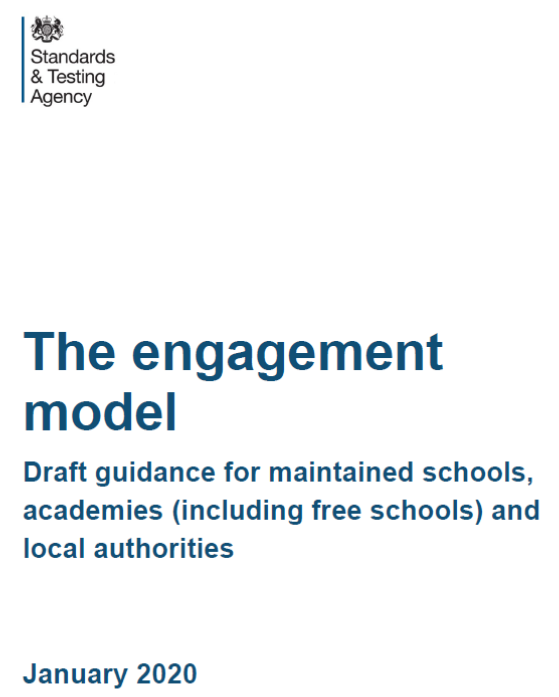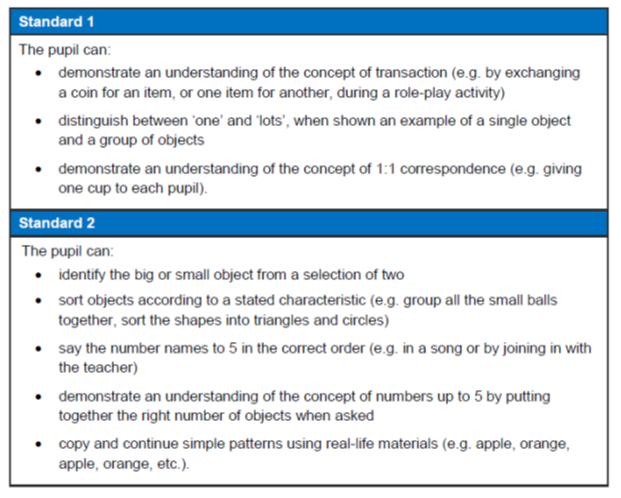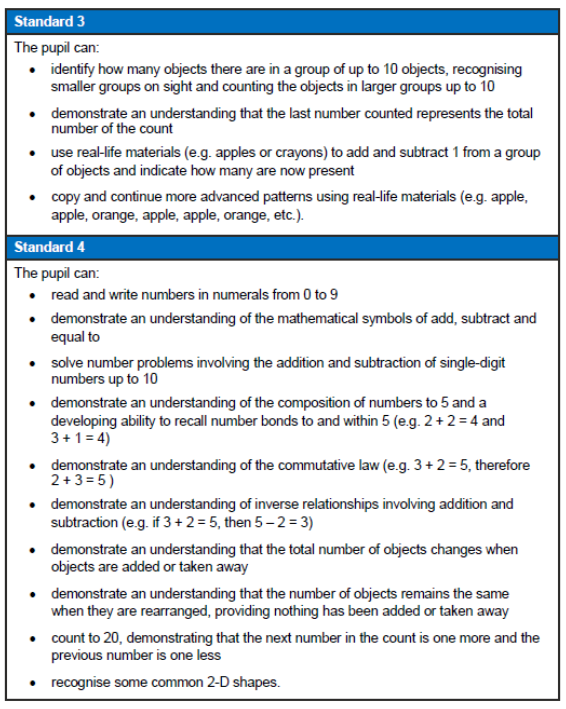Assessment
 Assessment is used to identify strengths and inform next steps. Reviewing the impact of the work continues the cycle of 'formative assessment'.
Assessment is used to identify strengths and inform next steps. Reviewing the impact of the work continues the cycle of 'formative assessment'.
Introduction to Assessment
Information about what we measure, how and why.
What we measure - We are keen to measure what is worth measuring:
- Pupils' personal and social development
- Pupils' abilities in communicating effectively
- Pupils' progress in relevant academic, arts and sports subject areas
- Pupils' independent abilities
We identify pupils' progress through:
- Formative assessment (diagnostic testing and marking helps form the next areas of teaching/learning),
- Summative (at the end point - evidencing standards reached)
- Ipsative assessment (progress related to their own development)
As such, assessment is a key aspect of:
- Celebrating individuals' achievements
- Enabling others (e.g. employers/college) to build on proven skills, knowledge and abilities
- Comparing pupils' attainment with similar learners and, neurotypical learners
- Effectively establishing the levels of support needed to continue learning and making progress
- Examining the effectiveness of our teaching
- Evidencing the individual's comparative strengths, from which to build on
Different Types of Assessing progress and achievements
We use a 'Basket' of Assessment Measures:
- EHCP Outcomes - steps of progress
- StAPPS: Our in-house assessment system
- Engagement Model (replacement of P-Scales)
- Government Age-related Tests for Year 1, Year 2 and Year 6 children: Literacy, Numeracy, Phonics
- Subject-specific testing for baselines and progress analysis
- WRIT: Wide Range Intelligence Testing: Testing that is standardised to find a child's IQ score
- Hodder Reading Tests: Testing reading to ascertain ability scores that translate to Reading Ages
- Helen Arkell Spelling Tests: Testing to find the spelling age of our pupils, with diagnostic support for phonics issues
- Occupational Therapy and Educational Psychology Assessments: Testing to ascertain abilities and diagnostic tests to establish a programme of further support
- Speech and Language Communication Needs Assessments: Testing to ascertain abilities and diagnostic tests to establish a programme of further support
- External Examinations
- Skills based qualifications e.g. swimming, cycling
- Entry Level
- Entry Level Certificate, Award or Diploma level
- Level 1 Qualifications (GCSE 1-3 grade equivalent)
- GCSE
- BTEC Level 1 and Level 2
- City and Guilds Level 1 and Level 2
- Industry CPD Accreditation (work-related learning certification)
Progress 8 scores for children with EHCP’s in Special Schools are 1.66 grades lower than ‘average’
Progress 8 scores for children with EHCP’s in Special Schools are 1.66 grades lower than ‘average’
Expectations of Progress Within Our Pathways from Different Starting Points
Pathways Parameters: Working through Pathways towards an identified set of outcomes, triangulated with national data sets from starting points.
|
End of KS1 |
Lower School |
End of KS2 |
Middle School |
End of KS3 |
Upper School |
End of KS4 |
|
|
PMLD (Min) |
P1(i) |
EC |
P1(i) |
EC |
P1(i) |
Internal |
P1(i) |
|
PMLD (Max) |
P3(ii) |
EC |
P5 |
PKSS |
P6 |
Internal |
P6 |
|
Path 1 (Min) |
P4 |
EC |
P6 |
PKSS |
P7 |
ASDAN |
P7 |
|
Path 1 (Max) |
P5 |
PKSS |
P7 |
PKSS |
1C |
EL1 |
U |
|
Path 2 & 3 (Min) |
P6 |
PKSS |
P8 |
KS1 |
1B |
EL2 |
U |
|
Path 2 & 3 (Mid) |
P8 |
KS1 |
2C |
LKS2 |
3B |
EL3 |
G |
|
Path 2 & 3 (Max) |
1A |
KS1/LKS2 |
3B |
UKS2 |
4A |
Level 1 |
E |
|
Mainstream (Min) |
2C |
LKS2/UKS2 |
4C |
KS3 |
5B |
Level 2 |
D |
|
Mainstream (Max) |
2B |
LKS2/UKS2 |
4B |
KS3 |
6C |
Level 2 |
C |
Benchmarking and Cross-Referencing Different Assessment Systems
| Old NC | STAPPS | Arbor % | New NC | Old NC | Herts STEPS | Dev. Age | EYFS Age | TAP Level | STAPPS | Arbor % | STAPPS % Equivalents | ||||||
| P1 | P1 | 1-3m | 6 | Stage 1 | 1 | <5 | <5 | ||||||||||
| P2 | P2 | 6-9m | 0-11m | 12 | Stage 2 | 2 | 5-9 | 5-9 | |||||||||
| P3 | P3 | 12-15m | 8-20m | 18 | Stage 3 | 3 | 10-14 | 10-14 | |||||||||
| EYFS / P-Scales |
P4 | P4 | 18m | 24 | Stage 4 | 4 | 15-19 | 15-19 | |||||||||
| P5 | 5 | <10 | PKS1 | P5 | P5 | 2y | 16-26m | 30 | Stage 5 | 5 | 20-24 | 20-24 | |||||
| P6 | 6 | 10-19 | PKS2 | P6 | P6 | 3y | 22-36m | 36 | Stage 6 | 6 | 25-29 | 25-29 | |||||
| P7 | 7 | 20-29 | PKS3 | P7 | P7 | 4y | 30-50m | 42 | Stage 7 | 7 | 30-34 | 30-34 | |||||
| P8 | 8 | 30-39 | PKS4 | P8 | P8 | 5y | 40-60m | 48 | Stage 8 | 8 | 35-39 | 35-39 | |||||
| 1C,1B | 9,10 | 40-44 / 45-49 | Y1 | 1C | A0 | 54 | 9, 10 | 40-44 | 40-44 | ||||||||
| 1A,2C | 11,12 | 50-54 / 55-59 | Y2 | Y1 | 1Bi, 1Bii | A1, A2 | 60 | Stage 9 | EL1 | 11 | 45-49 | 45-47 | |||||
| 2B,2A | 13,14 | 60-64 / 65-69 | Y3 | 1Ai, 1Aii | A3 | 62 | 12 | 48-51 | |||||||||
| 3C,3B | 15,16 | 70-74 / 75-79 | Y4 | Y2 | 2Ci, 2Cii | A4 | 64 | Stage 10 | 50-54 | ||||||||
| 3A,4C | 17,18 | 80-84 / 85-89 | Y5 | 2Bi, 2Bii | A5, A6 | 68 | 13 | 52-54 | |||||||||
| 4B,4A | 19,20 | 90-94 / 95-100 | Y6 | Y3 | 2Ai, 2Aii | B1, B2 | 72 | Stage 11 | EL2 | 14 | 55-59 | 55-57 | |||||
| 3Ci | B3 | 74 | 15 | 58-61 | |||||||||||||
| Y4 | 3Cii | B4 | 76 | Stage 12 | 60-64 | ||||||||||||
| 3Bi, 3Bii | B5, B6 | 80 | 16 | 61-63 | |||||||||||||
| Y5 | 3Ai, 3Aii | C1, C2 | 84 | Stage 13 | EL3 | 17 | 65-69 | 64-66 | |||||||||
| 4Ci | C3 | 86 | 18 | 67-70 | |||||||||||||
| Y6 | 4Cii | C4 | 88 | Stage 14 | 70-74 | ||||||||||||
| 4Bi, 4Bii | C5, C6 | 92 | 19 | 71-73 | |||||||||||||
| L1 | 4Ai, 4Aii | D1, D2 | 96 | Stage 15 | Level 1 | 20 | 75-79 | 74-77 | |||||||||
| 5Ci | D3 | 98 | 21 | 78-81 | |||||||||||||
| L2 | Stage 16 | 80-84 | |||||||||||||||
| Level 2 | 82-84 | ||||||||||||||||
| KS3 | Stage 17 | 85-89 | |||||||||||||||
| Foundation GCSE | Stage 18 | 90-94 | |||||||||||||||
| Higher GCSE | Stage 19 | 95-100 | |||||||||||||||
The Engagement Model & EYFS Development Matters
The Engagement Model - working below National Curriculum expectations

The areas of Engagement:
- Exploration
- Realisation
- Anticipation
- Persistence
- Initiation
Standards - A Change from P-Scales



At St Luke's School, we use the Engagement Model for some of our pupils and, work where relevant with assessments including StAPPS.
Early Years Foundation Stage
Development Matters - Non-statutory Curriculum Guidance for the EYFS
Cognitive Testing - WRIT
Cognitive Testing - WRIT
All pupils at St Luke's School present with complex learning difficulties that impact on their progress in learning, highlighted when comparing this with the expectations of age-related/ neuro-typical learners' progress and attainment.
The WRIT (Wide Range Intelligence Test)
is designed for individual administration to persons aged 5 through 85 year therefore is suitable to all pupils in school (4 – 17 years). It has strong psychometric integrity and its application is to identify ability levels and other exceptionalities that will identify barriers for learning and inform educational provision to overcome these difficulties.
The test is administered by a trained teacher/HLTA in conditions that observe testing principles and courtesies as described in the testing instruction requirements.
The results are obtained and presented in a simplified table for the teachers to interpret and consider it as part of an educational pen portrait. Further identification of underlying abilities allows the school to secure focused interventions to address weaknesses and further develop individual strengths.
The test results usually confirm observational traits (spiky profile) and are consistent with diagnosis although they highlight specific areas that then can be addressed in lessons on an individual level. They ensure precision of intervention and a long term implication and projection. A starting point for further research could be Eric.
Where appropriate, the results are shared with parents and other professionals to evidence the pupil progress and inform the right curriculum and environment to maximise learning.
STAPPS - our in-house assessment system
STAPPS - St Luke's Assessing Pupil Progress System
We needed a system that anchored progress against national data of mainstream and special school pupils.
- To evidence progress
- To cover areas of learning required for our learners e.g. national curriculum and our curriculum priorities
- To seek to avoid the assessment system being a curriculum planner
- To be effective and bespoke for special needs learners and their teachers
- We anchored progress against national data of mainstream and special school pupils for triangulation and benchmarking
So, what is the focus of the assessment at St Luke's?
- Progress in learning across our key curriculum intents of improving Communication, Personal Development and Understanding Our World.
- Developing independence and functional skills
- The acquisition of new skills and knowledge
- Inclusivity of children, parents/carers and professionals in the co-assessment of pupils' learning
What makes St Luke's system effective for SEND learners?
Many systems for assessment are only age-related and categorise our children as under-achievers. We feel this is over-simplistic. Invariably, people with cognitive disabilities, achieve less than a child of the same age, who learns at an 'ordinary' rate - evidenced through the Government's Progression Materials regarding progress across the country.
This system uses 'I Can' statements, which build up as points over the course of the year, identifying small increments as well as leaps in progress. As such, STAPPS captures pupil's spiky learning profiles and age-related abilities. All of which are monitored through challenging targets based on their comparative abilities and, benchmarked with national data.
Different 'starting points' (recorded ability at a recorded age) are important to know in order to see how much progress is made between that point and a subsequent point in time (data is most often measured from the end of academic years/ ends of key stages).
Every day is a new day! We do not know any child's potential, nor should we create glass ceilings that prevent progress as a result of low expectations. With synapses in the brain forming in the plasticity of our brain- these sparks of learning need encouraging to transfer to the parts of the longer-term memory in the brain.
STAPPS is used for each child at St Luke's from 7yrs through to Yr11 along with external examination accreditations, enabling children's strengths to be mapped at whatever point they meet. Both concrete and abstract aspects of learning feature in the hierarchy of skills and knowledge. It is a flexible system, easy to understand and work with, whilst also reflecting the requirements of the new national curriculum and new external examinations.
Reporting to Parents
There are many ways parents and carers are informed of their child's progress over the course of the year. These include:
- Face to face meetings with parents
- Letters and information sent home
- Weekly newsletters
- Assemblies that parents are invited to attend to see the presentation of ideas and activities
- Notes between parents and teachers through Class Dojo
- Email correspondence between parents and staff
- Telephone conversations between parents and staff
- EHCP Progress Review meetings - Termly meetings with the class teacher
- EHCP reports
- EHCP Annual Reviews
- Copies of referrals and letters between professionals
We are challenged by the new GCSE examinations, which are designed for the young person who can retain knowledge, has a good working memory and can access examination situations. The new GCSEs are linear courses, with no coursework but examinations at the end of a two year course. They demand a reading age of 16.5yrs to access all the questions.
Outcomes
Specific Outcomes include:
- EHCP Outcomes, specific to the individual child/young person
- External Accreditation including GCSE subjects, Entry Level subjects, BTEC
- Internal certification pre-Entry level 1 standards
- Food and Hygiene certification
- Cycling proficiency
- Swimming proficiency
- Experience of Work
- Personal Social Development
- Interview Experience
- Functional literacy and numeracy
- Communication and Language development
- Travel Training
- Life Skills
- Gardening, animal care, cookery
- National Curriculum content - taught subject knowledge
- Money sense
Year 11 Leavers 2024
Destinations:
- Those going on to further education: 38 (98%)
- Those going to different complex needs provisions: 0 (0%)
- Those going into supported employment: 0 (0%)
